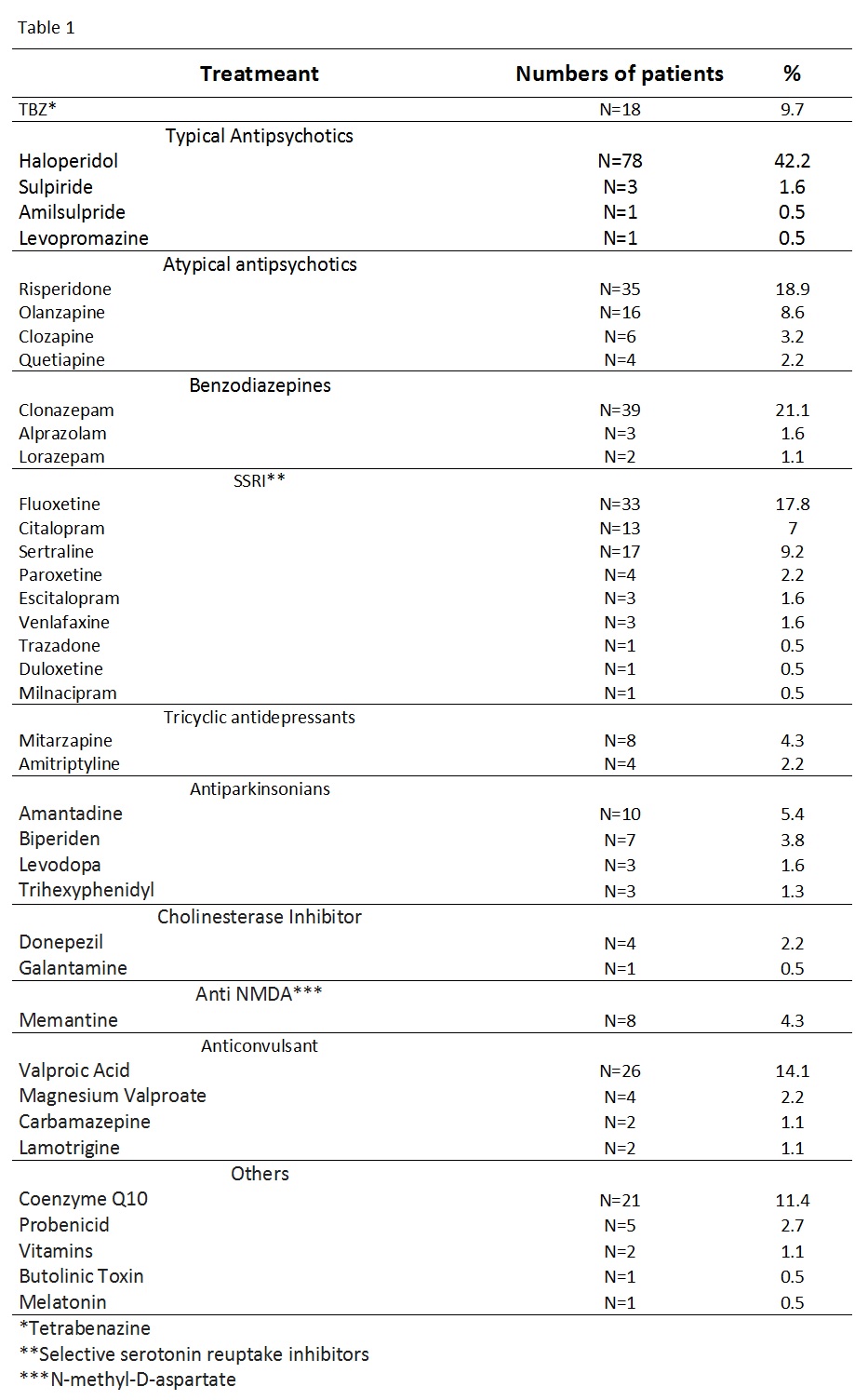Session Information
Date: Tuesday, June 6, 2017
Session Title: Huntington's Disease
Session Time: 1:45pm-3:15pm
Location: Exhibit Hall C
Objective: To describe the prescription pattern for the treatment of HD in a sample of Mexican patients from a tertiary referral center.
Background: Huntington’s disease (HD) is autosomal dominant neurodegenerative disorder. The clinical picture is compromised by motor and neuropsychiatric symptoms. The treatment depends on the predominance and severity of these symtoms.
The American Academy of Neurology guidelines and the International Parkinson’s and Movement Disorders Society recommendations differ significantly in regards to the pharmacologic drugs of choice. In addition, prescription patterns may be influenced by socioeconomic factors.
Methods: A cross-sectional study was carried out. Patients with molecular diagnosis of HD attending the outpatient clinic of the National Institute of Neurology and Neurosurgery in Mexico City were included. The data collected included main clinical features as well as the type of drug. Descriptive analysis was performed in terms of percentages.
Results: A total of 185 patients were included in the study (48.1% men and 51.9% women). The mean age was 50.8±13.2 years. Age at HD diagnosis was 38.5±12.9 years.
The most common used drugs were antipsychotics. Typical antipsychotics used were haloperidol prescribed in 78 Patients (42.2%), sulpiride in 1.6%, amilsupride and levopromazine in only one patient each. On the other hand, atypical antipsychotics prescribed included risperidone in 35 patients (18.9%) olanzapine in 16 patients (8.6%), quetiapine in four patients (2.2%) and clozapine in six patients (3.2%). A total of 18 (9.7%) were on tetrabenazine. [Table 1]
Conclusions: In Mexico, typical antipsychotics are more commonly used than atypical ones. Overall, haloperidol is the most common drug used. Other drugs, such as tetrabenazine, may be used less mainly due to economic reasons. A cost-utility and cost-effectiveness analysis may be warranted.
References:
- Armstrong, M. J., & Miyasaki, J. M. (2012). Evidence-based guideline: Pharmacologic treatment of chorea in Huntington disease Report of the Guideline Development Subcommittee of the American Academy of Neurology. Neurology, 79(6), 597-603.
- Reilmann, R. (2013). Pharmacological treatment of chorea in Huntington’s disease–good clinical practice versus evidence‐based guideline. Movement Disorders, 28(8), 1030-1033.
To cite this abstract in AMA style:
A. De-la-Cruz, L. Mendoza Vega, N. Davila Avila, K. Salinas Barboza, S. Isais Millan, A. Cervantes Arriaga, M. Rodriguez Violante. Prescription pattern of treatment in Mexican patients with Huntington’s Disease. [abstract]. Mov Disord. 2017; 32 (suppl 2). https://www.mdsabstracts.org/abstract/prescription-pattern-of-treatment-in-mexican-patients-with-huntingtons-disease/. Accessed April 20, 2025.« Back to 2017 International Congress
MDS Abstracts - https://www.mdsabstracts.org/abstract/prescription-pattern-of-treatment-in-mexican-patients-with-huntingtons-disease/

